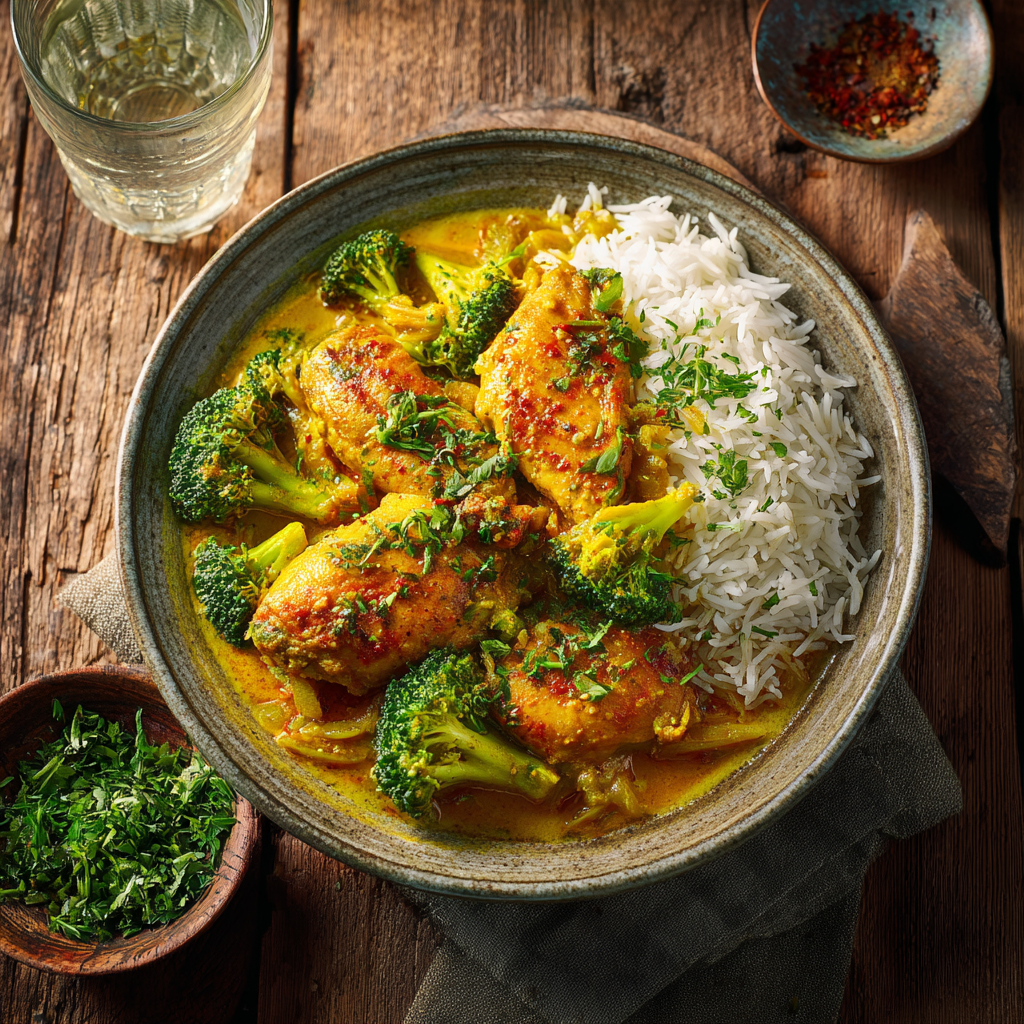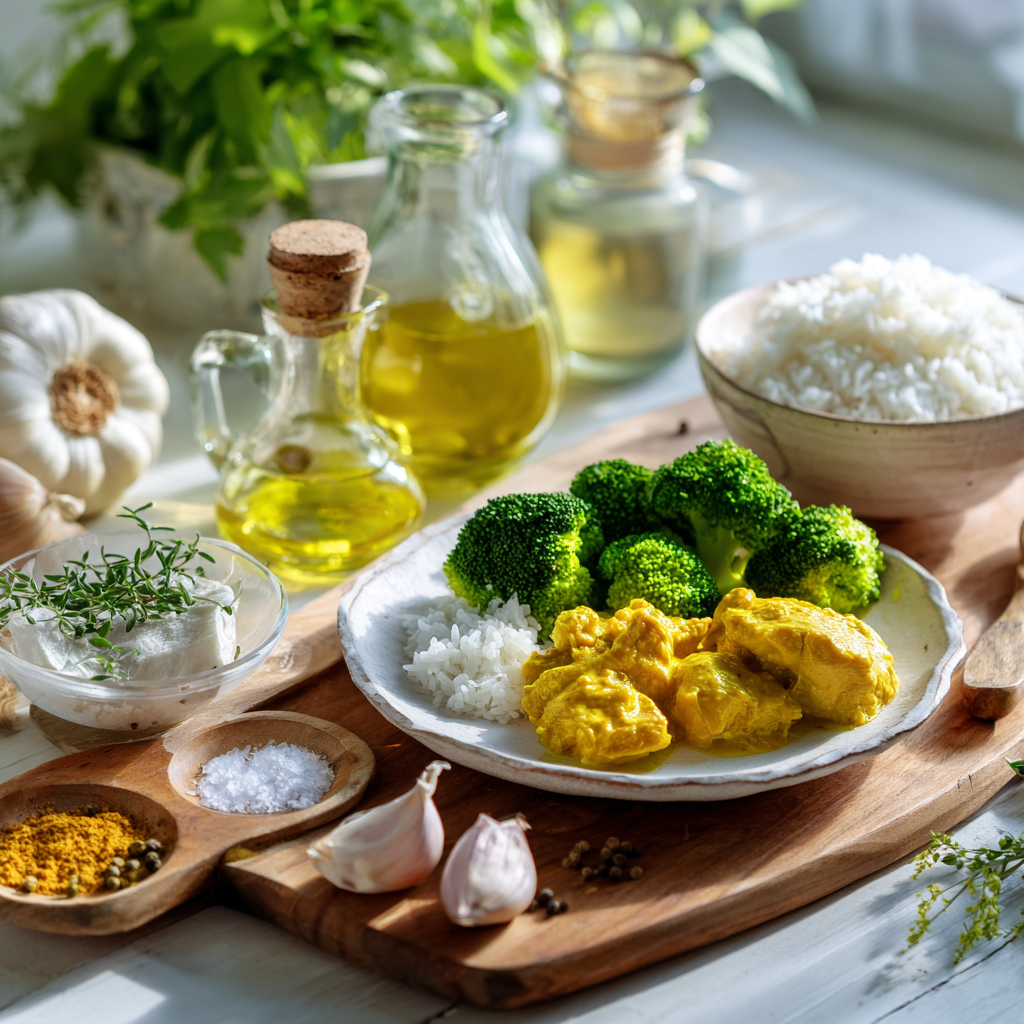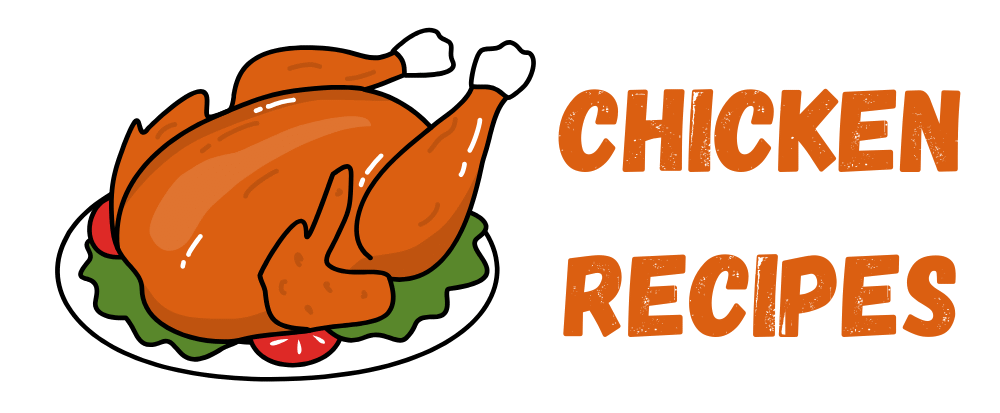
Why Golden Curry Chicken Is a Must-Try
I still remember the first time I tried golden curry chicken. It was a chilly evening, and my friend invited me over for dinner. She placed a steaming plate in front of me—chunks of tender chicken bathed in a rich, velvety sauce with just the right balance of warmth and spice. One bite, and I was hooked. That night, I learned what makes golden curry chicken so special. Whether you’re cooking for your family or hosting a dinner party, this dish is versatile enough to fit any occasion.
What sets golden curry apart from other types of curry? If you’ve ever wondered about Japanese curry vs Indian curry, here’s the scoop. Japanese curry, like golden curry, tends to be milder and sweeter. It has a thicker, almost stew-like consistency thanks to the use of curry roux blocks. Indian curries, on the other hand, often rely on fresh spices and coconut milk for their flavor base. Golden curry strikes a perfect balance—it’s comforting yet exciting, simple yet packed with layers of flavor.
Here’s why golden curry chicken stands out:
- Beginner-friendly: You don’t need to be an expert chef to nail this recipe.
- Versatile: Serve it over rice, with bread, or even on its own.
- Comforting: The combination of tender chicken and aromatic spices feels like a warm hug.
Golden curry chicken isn’t just a meal; it’s an experience. I’ve made it countless times since that first taste, tweaking the recipe slightly each time. Sometimes I add extra veggies for a healthier twist. Other times, I go heavy on the spices to give it more kick. No matter how I prepare it, the result is always satisfying. This dish works wonders for busy weeknights but also shines at potlucks or holiday gatherings.
What You’ll Need for This Recipe
Before we dive into the cooking process, let’s talk ingredients. A good golden curry chicken recipe starts with quality components. Here are the essentials:
- Chicken: Boneless, skinless thighs work best because they stay juicy during cooking.
- Curry roux: This is the heart of the dish. Look for golden curry roux blocks—they’re easy to find and make all the difference.
- Vegetables: Carrots, potatoes, and onions are classic choices, but feel free to experiment.
- Spices: Some recipes call for additional seasonings, but the roux usually packs enough flavor.
One question I hear a lot is: where can I buy Japanese curry roux blocks in the USA? Don’t worry—I’ve got you covered. Most Asian grocery stores carry brands like S&B or House Foods. If there’s no local store near you, online retailers like Amazon have plenty of options. Just search for “where to buy Japanese curry roux,” and you’ll find several choices delivered right to your door.
A pro tip: Always check the expiration date when buying curry roux. These blocks last a long time, but freshness matters. Also, if you’re new to making curry, start with mild or medium heat levels. You can always adjust the spice as you get more comfortable with the recipe.
Another thing I love about this dish is how forgiving it is. Forgot to pick up carrots? Use zucchini instead. Out of chicken? Try beef or tofu. The beauty of golden curry chicken lies in its adaptability. As long as you have the roux and some basic staples, you’re good to go.
To give you a clearer picture, here’s a quick breakdown of the essential ingredients:
| Ingredient | Role in the Dish |
|---|---|
| Chicken | Main protein source, adds richness |
| Curry roux | Provides signature flavor and thickness |
| Carrots & Potatoes | Add texture and natural sweetness |
| Onions | Builds depth and aroma |
Once you gather these ingredients, you’re ready to create magic in the kitchen. Trust me, once you try this recipe, you’ll understand why golden curry chicken holds such a special place in my heart—and soon, maybe yours too.

Step-by-Step Guide to Making Golden Curry Chicken
Alright, so you’ve got all your ingredients ready—chicken, curry roux, veggies, and maybe a sprinkle of excitement. Let’s get into the nitty-gritty of how to turn these humble components into a bowl of pure comfort. I promise, this is easier than it sounds. Funny enough, the first time I made golden curry chicken, I was convinced I’d mess it up. Spoiler alert: I didn’t, and neither will you.
First things first, let’s talk chicken prep. Cutting it into bite-sized pieces is key—it cooks faster and absorbs more flavor. Some people swear by marinating the chicken before cooking, but honestly, with golden curry chicken, it’s not a dealbreaker. That said, if you’re feeling fancy, tossing the chicken in a bit of soy sauce, garlic powder, or even a dash of turmeric can add an extra layer of umami. So, should you marinate chicken before cooking curry? My take: it’s optional, but if you’ve got the time, go for it. Otherwise, no stress.
Now, here’s where the magic begins. Grab a large pot or skillet and heat up some oil. Start by sautéing onions until they’re soft and caramelized. If you’ve ever wondered how to caramelize onions for curry, the secret lies in patience. Keep the heat medium-low and stir occasionally. Trust me, those golden-brown edges are worth the wait—they add a depth of flavor that makes the dish sing. Once the onions are ready, toss in minced garlic and ginger. This trio—onions, garlic, ginger—is like the holy trinity of curry-making. It’s simple but oh-so-effective.
Next, add the chicken to the pot. Cook it thoroughly, stirring occasionally to ensure each piece gets a nice sear. By the way, don’t overcrowd the pan; otherwise, the chicken will steam instead of brown. Nobody wants soggy chicken in their curry, right? Once the chicken is cooked through, it’s time to introduce the star of the show: the curry roux. Break it into chunks and let it melt into the mix. Stir gently until it dissolves completely, coating everything in that rich, velvety sauce. Pro tip: keep the heat low while melting the roux to avoid clumping.
Building Layers of Flavor
Okay, so we’ve got our base going, but now it’s time to bulk it up. Potatoes and carrots are classic additions, but feel free to experiment. Sweet potatoes? Totally doable. Zucchini? Why not! If you’re looking for ideas, check out this chicken curry recipe without coconut milk for inspiration on alternative veggies. The best vegetables for curry are the ones you love eating, so don’t be shy about customizing.
Once your veggies are in the pot, pour in enough water or broth to cover everything. Here’s the thing: simmering is crucial. Let everything cook together on low heat for at least 20-30 minutes. How long should curry simmer for maximum flavor? Honestly, the longer, the better. The flavors need time to meld, like old friends catching up after years apart. Just keep an eye on the liquid level and add more as needed to prevent sticking.
Speaking of liquid, adjusting the consistency is kind of an art. If you prefer a thicker curry, let it reduce uncovered for a bit. Want something soupier? Add a splash of broth or water. I personally like mine somewhere in the middle—not too thick, not too thin. Oh, and if you’re aiming for a Filipino twist, this chicken curry Filipino recipe suggests using coconut milk for creaminess. While we’re skipping the coconut milk here, it’s always fun to explore variations.
Tips for Perfecting Your Golden Curry Chicken
Let’s talk about balance. One of the most common questions I get is how to achieve that perfect harmony between sweet, savory, and spicy notes. Balancing flavors in curry isn’t rocket science, but it does require a bit of tweaking. Taste as you go—if it’s too sweet, add a pinch of salt or a squeeze of lemon juice. Too bland? A dash of chili powder or a spoonful of curry paste can wake it right up. And remember, the curry roux already has sweetness built-in, so tread lightly when adding sugar.
By the way, have you thought about what to serve with golden curry chicken? Rice is the obvious choice, but there’s no harm in switching things up. Naan bread is fantastic for scooping up every last bit of sauce. Or, if you’re feeling adventurous, pair it with a crisp salad for contrast. For more pairing ideas, this Guyanese curry chicken recipe offers some creative suggestions that might spark your imagination.
Funny story: one time, I served golden curry chicken over mashed potatoes because I ran out of rice. Guess what? It was amazing. Sometimes happy accidents lead to the best meals. Another pro tip: if you’re hosting a crowd, consider making a double batch. Leftovers taste even better the next day since the flavors have had more time to develop.
If you’re still unsure about anything, don’t hesitate to try different approaches. For instance, this chicken curry recipe Philippines uses local spices and techniques that could give you fresh insights. Cooking is all about experimentation, so don’t be afraid to make the recipe your own.
Lastly, don’t forget to garnish. A sprinkle of chopped green onions or cilantro adds a pop of color and freshness. It’s the little details that elevate a dish from good to great. And hey, if you’re feeling lazy, skip the garnish—your curry will still be delicious.
There you have it—a foolproof guide to making golden curry chicken that’s bursting with flavor and personality. Whether you follow the steps exactly or put your own spin on it, one thing’s for sure: this dish will quickly become a favorite in your repertoire. So grab your apron, fire up the stove, and let’s get cooking!

Common Mistakes to Avoid When Cooking Curry
Alright, let’s get real for a second. Even though golden curry chicken is pretty forgiving, there are still some rookie mistakes that can sneak up on you if you’re not careful. I’ve made my fair share of these errors, and trust me, they’re no fun. But hey, learning from mishaps is part of the cooking journey, right?
One biggie is overcooking the chicken. Here’s the thing—chicken thighs are magical because they stay juicy even when simmered for a while, but push it too far, and you’ll end up with dry, stringy bites. Nobody wants that. So keep an eye on your chicken, especially after adding the curry roux. Speaking of which, have you ever wondered, can you overcook curry? Well, kind of. Over-simmering can make the sauce overly thick or even burn at the bottom of the pot. Keep the heat low and stir occasionally to avoid disaster.
Another pitfall? Using way too much curry roux. I get it—you want that bold, rich flavor. But here’s the deal: a little goes a long way. If you dump in too much roux, your curry might end up tasting like a salty spice bomb instead of the balanced dish we’re aiming for. Start small, taste as you go, and adjust accordingly. Trust your palate—it won’t steer you wrong.
By the way, don’t skip caramelizing the onions. I know it takes a bit of patience, but this step is non-negotiable if you want depth and sweetness in your curry. One time, I was in a rush and threw raw onions straight into the pot. The result? A flat, one-dimensional dish that lacked soul. Lesson learned. Caramelizing doesn’t just add color; it builds layers of flavor that elevate the entire meal.
Funny enough, another mistake I see all the time is rushing the simmering process. People think, “Oh, everything’s cooked, so I’m good to go!” Not quite. Simmering isn’t just about cooking ingredients—it’s about letting them hang out together and become friends. Give your curry at least 20-30 minutes to meld, and you’ll notice a world of difference. If you’re curious about how long curry should simmer for maximum flavor, check out this guide to mastering curry techniques. It’s got some great tips for nailing the timing.
Frequently Asked Questions About Golden Curry Chicken
I get tons of questions about golden curry chicken, so I figured I’d address a few common ones here. Whether you’re a first-timer or a seasoned pro, these answers might come in handy.
- Q: Can I make golden curry chicken ahead of time?
Absolutely! In fact, making it ahead of time is a smart move. Letting the flavors sit overnight does wonders. The next day, you’ll have a richer, more cohesive dish. Just reheat gently on the stove, adding a splash of water or broth if needed to loosen it up.
- Q: Is golden curry chicken gluten-free?
Most traditional recipes aren’t gluten-free because curry roux often contains wheat flour. However, plenty of brands now offer gluten-free options. Swap out regular roux for a gluten-free version, and you’re good to go!
- Q: How do I store leftovers?
Leftovers are awesome, aren’t they? Store your golden curry chicken in an airtight container in the fridge for up to three days. Pro tip: label the container with the date so you don’t forget how long it’s been sitting there.
- Q: Can I freeze golden curry chicken?
You bet! Freezing is a lifesaver for meal prep. Portion it into freezer-safe bags or containers and pop it in the freezer for up to three months. Thaw overnight in the fridge before reheating.
Here’s a bonus tip: if you’re freezing, leave out fresh herbs like cilantro until you reheat. They lose their vibrancy in the freezer, so sprinkle them on fresh when serving instead.
Experimentation and Personal Touches
Cooking golden curry chicken isn’t about perfection—it’s about creativity. Once you’ve nailed the basics, don’t be afraid to experiment. Maybe toss in some diced bell peppers for crunch or drizzle chili oil for extra heat. I once added a splash of apple cider vinegar to brighten the dish, and wow, it worked beautifully. The beauty of cooking is that every tweak makes it uniquely yours.
Here’s a random thought: did you know that golden curry chicken can double as a base for other meals? Leftover curry mixed with scrambled eggs makes an insane fried rice. Or blend it into a creamy soup by thinning it out with coconut milk. Seriously, the possibilities are endless.
Speaking of versatility, have you considered pairing it with unexpected sides? While rice and naan are classics, try serving it alongside roasted sweet potatoes or a tangy cucumber salad. These combos bring a refreshing contrast to the rich curry flavors. For more inspiration on pairings, take a peek at this resource on global curry traditions. You might discover new ideas to jazz up your meals.
Your Turn to Shine
Golden curry chicken has earned its spot as a comfort-food superstar for good reason. It’s easy to make, endlessly customizable, and downright delicious. Whether you stick to the classic recipe or put your own spin on it, this dish is bound to win hearts—and stomachs—at your table.
So grab those ingredients, roll up your sleeves, and give it a shot. Once you’ve mastered the basics, let your imagination run wild. And hey, I’d love to hear how it turns out! Drop a comment below to share your experience, ask questions, or show off your culinary genius. Happy cooking!
FAQ Block
- Q: What type of chicken works best for golden curry?
Boneless, skinless thighs are ideal because they stay tender and juicy during cooking. Breasts work too but can dry out faster.
- Q: Can I use vegetables other than carrots and potatoes?
Definitely! Try sweet potatoes, zucchini, peas, or green beans. Mix and match based on what you have on hand.
- Q: Should I use water or broth when making curry?
Broth adds more flavor, but water works fine if you’re keeping things simple. Vegetable or chicken broth pairs beautifully with golden curry.
- Q: How spicy is golden curry chicken?
It depends on the roux you choose. Mild versions are family-friendly, while spicy ones pack a punch. Adjust according to your preference.
- Q: Do I need special equipment to make this dish?
Nope! A standard pot or skillet is all you need. No fancy gadgets required.
- Q: Can I make golden curry chicken vegetarian?
Absolutely. Swap the chicken for tofu, chickpeas, or paneer, and use vegetable broth for a plant-based twist.
- Q: Why is my curry too thick?
Add a little water or broth to thin it out. Remember, consistency is adjustable!
- Q: Can I use homemade curry paste instead of roux?
Yes, but note that the flavor profile will differ. Roux gives golden curry its signature thickness and sweetness.
- Q: How do I prevent my curry from tasting bland?
Season generously, don’t skip caramelizing the onions, and taste as you cook. Balance sweetness with acidity or saltiness as needed.
- Q: Is golden curry chicken kid-friendly?
Totally! Kids usually love the mild, comforting flavors. Serve it with rice or bread for a complete meal.

Golden Curry Chicken Recipe
Ingredients
Equipment
Method
- Cut chicken thighs into bite-sized pieces.
- Heat oil in a large pot or skillet over medium-low heat.
- Sauté onions until soft and caramelized.
- Add minced garlic and ginger; cook until fragrant.
- Add chicken pieces to the pot; cook until browned and thoroughly cooked.
- Break curry roux into chunks and add to the pot; stir until dissolved.
- Add chopped carrots and potatoes (or desired vegetables).
- Pour in enough water or broth to cover the ingredients.
- Simmer on low heat for 20-30 minutes, stirring occasionally.
- Adjust consistency by adding more liquid if needed; taste and adjust seasonings.
